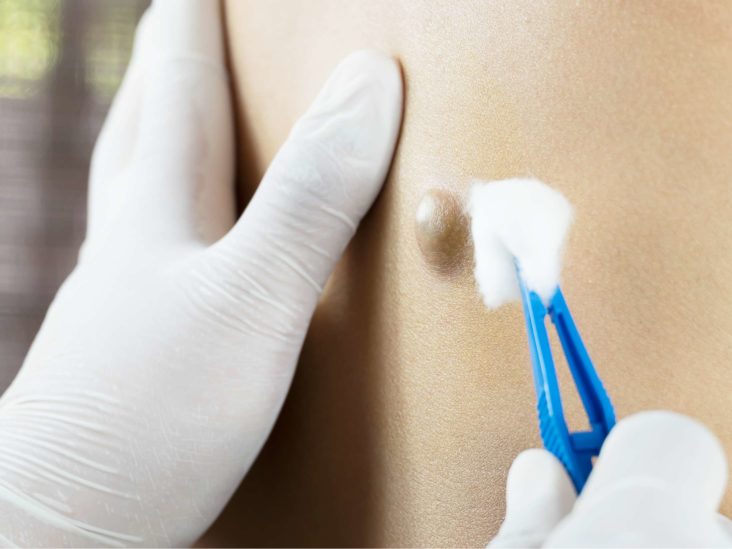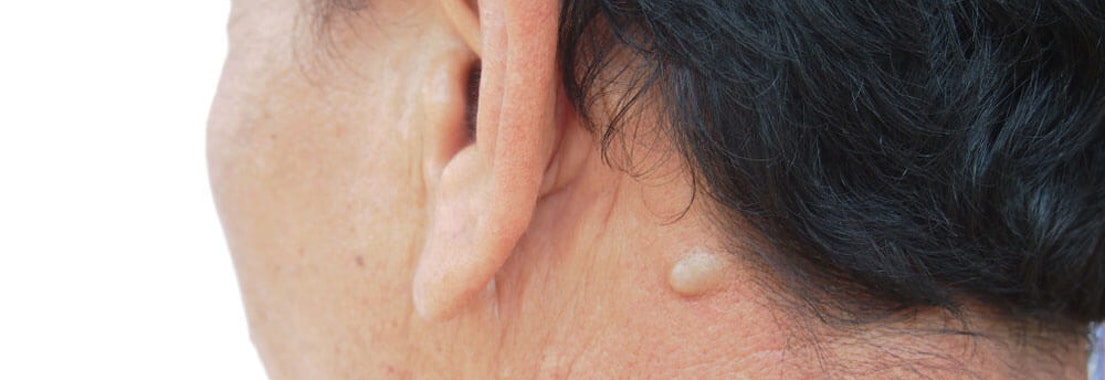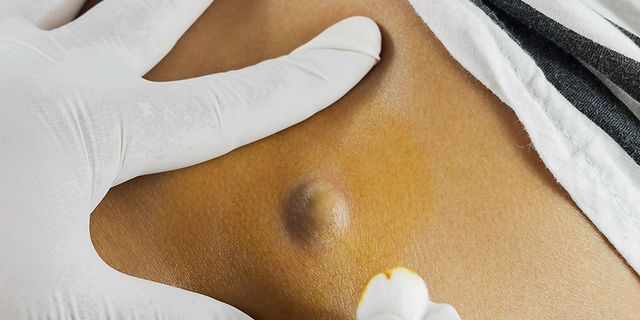Cysts like sebaceous cyst can be removed safely through latest surgical procedures like punch hole excision with barely visible scarring. Another common type of cyst is post acne cyst(pimple cyst) on face where one can see a persistant swelling on pimple site for prolonged period of time. This can be drained or excised accordingly and cured completely.
A tiny bump on your skin is referred to as cysts. It is a small sac-like structure, filled with liquid or air. Cysts do dissolve or disappear on their own whereas some stay back or grow larger causing pain and discomfort. You should seek medical attention if a cyst stays on your skin for more than 3 months. And if there are changes in the size, colour or shape of the cyst then it is best to visit a dermatologist for a consultation.
Yes, it's important to know what exactly a cyst is and how they build. A cyst is a closed sac with a defined tissue layer that contains air, fluid, or semi-solid materials and is commonly found on the skin.
Cystic acne is the most serious type of acne that forms deep underneath your skin. It is a combination of dry skin cells, oil, and bacteria that get snared in your facial pores. While anyone can develop acne, cystic acne tends to form in people with oily skin.

There are a variety of factors that can develop into a cyst, including acne. Some of the other common causes of cyst formation are skin trauma, infection, and hormonal imbalances and genetic predispositions also another reason for cyst development in some cases.
While cysts are formed commonly, it's important to understand that there are different types of cysts that can be formed. They are:
Sebaceous cysts
● One of the most common types of cyst.
● They are developed when keratin fluid is snared near a damaged hair follicle or a blocked duct beneath the skin.
● They look like a pimple
● The most commonly developed on the scalp, face, neck, shoulder and back.

Epidermoid cyst
● This is another common type of cyst that is caused when keratin is trapped beneath the skin.
● These cysts may appear red, swollen, and painful if they get infected
● These cysts are generally benign and grow very slowly.
● These cysts are commonly found on the head, face, neck, shoulder and back.
Ganglion cysts
● These cysts are quite common.
● They are round lumps of tissue filled with fluid and appear along with tendons or on joints.
● These cysts commonly appear on the wrists, hands, ankles, and feet.

The sebaceous cyst removal treatments completely depend on the type of cyst.
1. Surgical Excision
This technique completely empties all the contents of the cyst in a way that ensures there are no traces of the cyst. In surgical excision, the doctor could perform the techniques mentioned below.
2. Punch Excision
In this technique, a small incision is created with a punch or circular device to remove the cyst and its contents. Importantly, there will be only very minimal scarring in this procedure.
3. Wide excision removal
This technique involves making a larger opening and removing the cyst and its contents entirely.
4. Radiofrequency ablation
This technique creates a small opening using radiofrequency or heat to remove the contents in the cyst completely.
● A cyst should be removed when there is pain, discomfort has grown bigger in size over time, or contains malignant tissue or an infection or confidence issues.
● In these situations, it's always good and very necessary to remove a skin cyst as soon as possible to avoid further health discomforts.
● In most cases, the cyst removal technique isn't really necessary unless you're facing discomfort with it.
● Once the cyst is removed by treatment, it’s very important to test the cyst to confirm that it is not cancerous.

If you can bear the small sting of a shot, then you can bear a cyst excision or cyst removal treatment. Usually, our dermatosurgeon numbs the cyst area first and then proceeds with the removal process. You may feel a slight sting at that time which is the worst part of this technique and that's it, the procedure gets over.
If the excision technique is closed with stitches, it takes about 2 weeks to heal completely. If your incision is left with no stitches, it may take about 7 to 10 days to heal. After the cyst excision has healed there will be a scar that will fade and become softer and normal with time.
Yes, you'll have stitches inside and outside after a cyst excision technique, to minimize scarring. Patients may have tenderness and mild pain after an excision, which can be handled with medications. And infected cysts may need further treatment.

At Dr.Madhu's Skin and Hair Clinic, we are always ready to help you live your happiest, most confident life. If you have any queries about cysts or cyst excision, fix up a consultation with our team today.